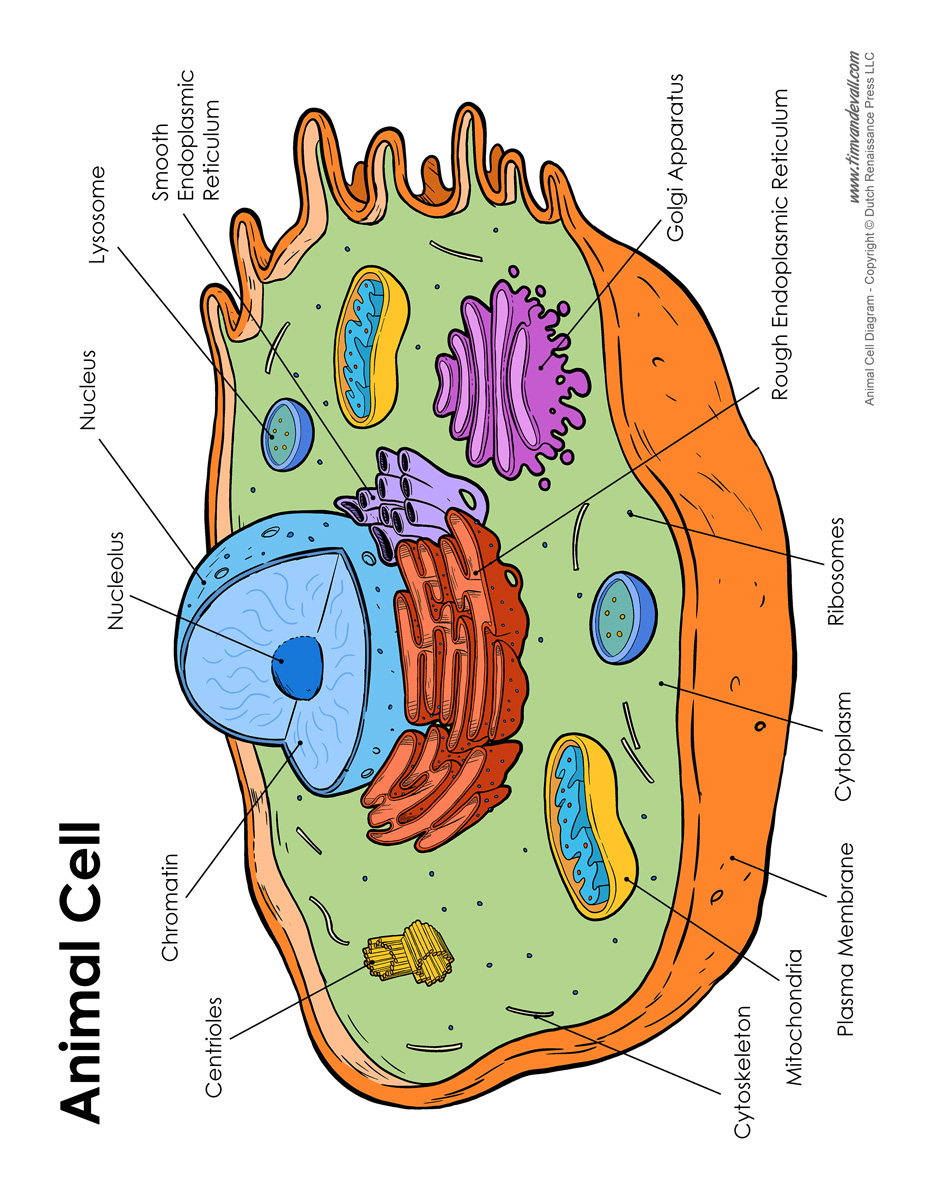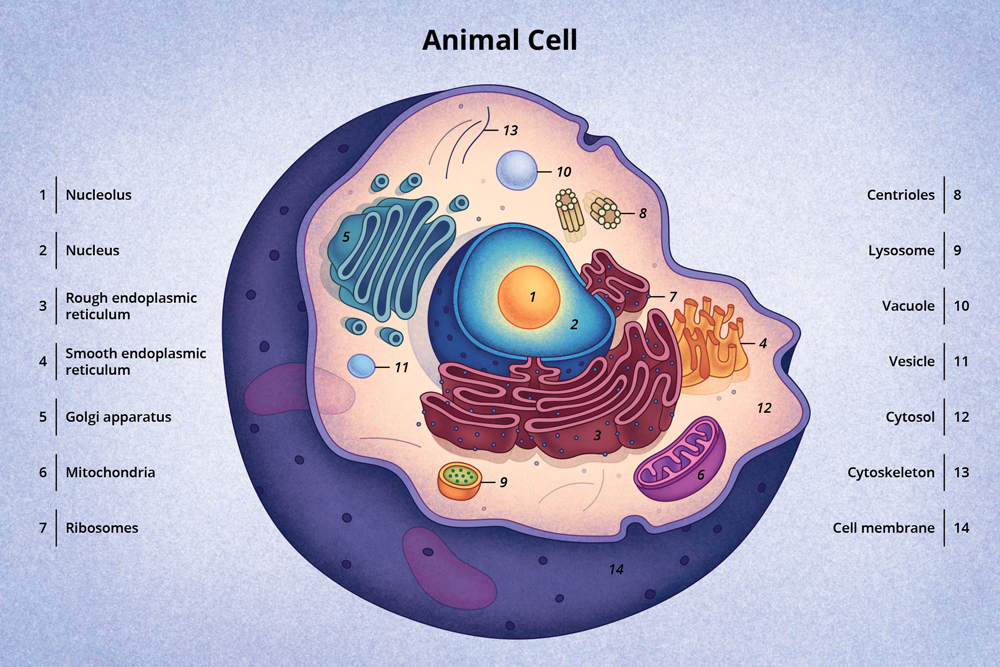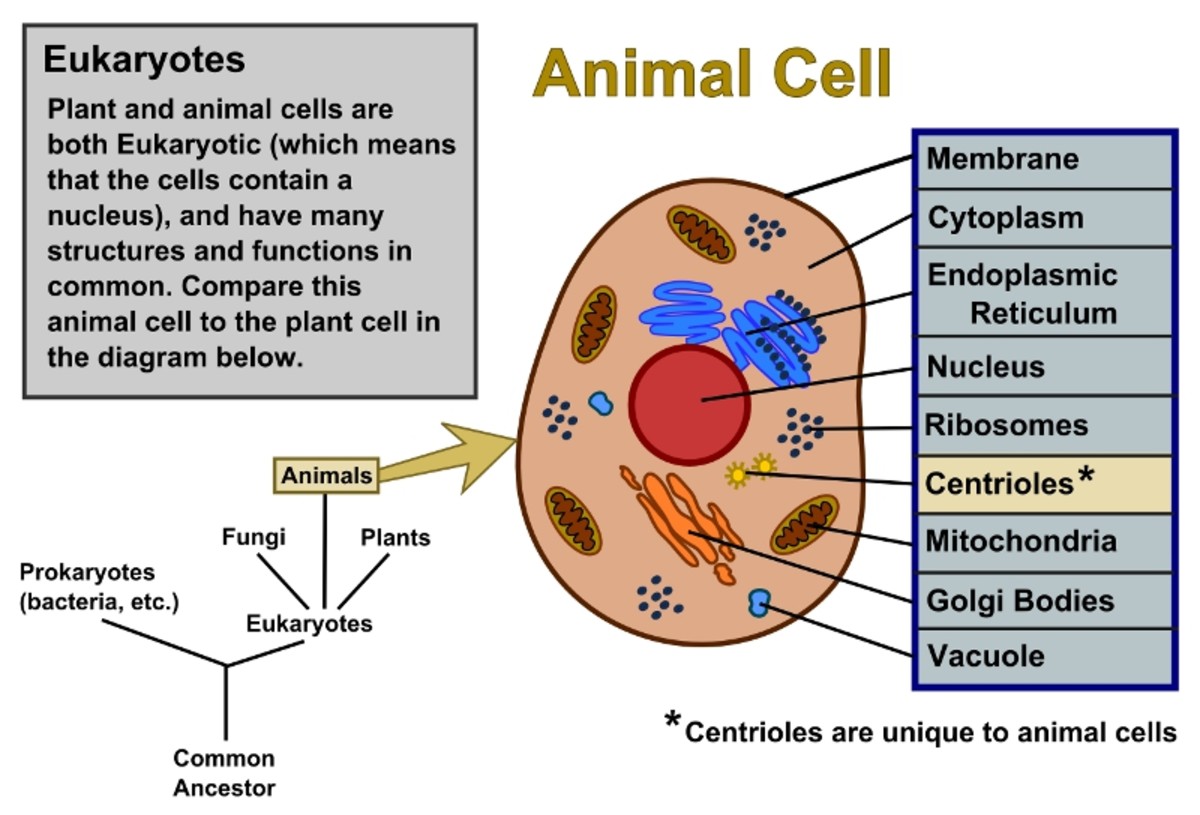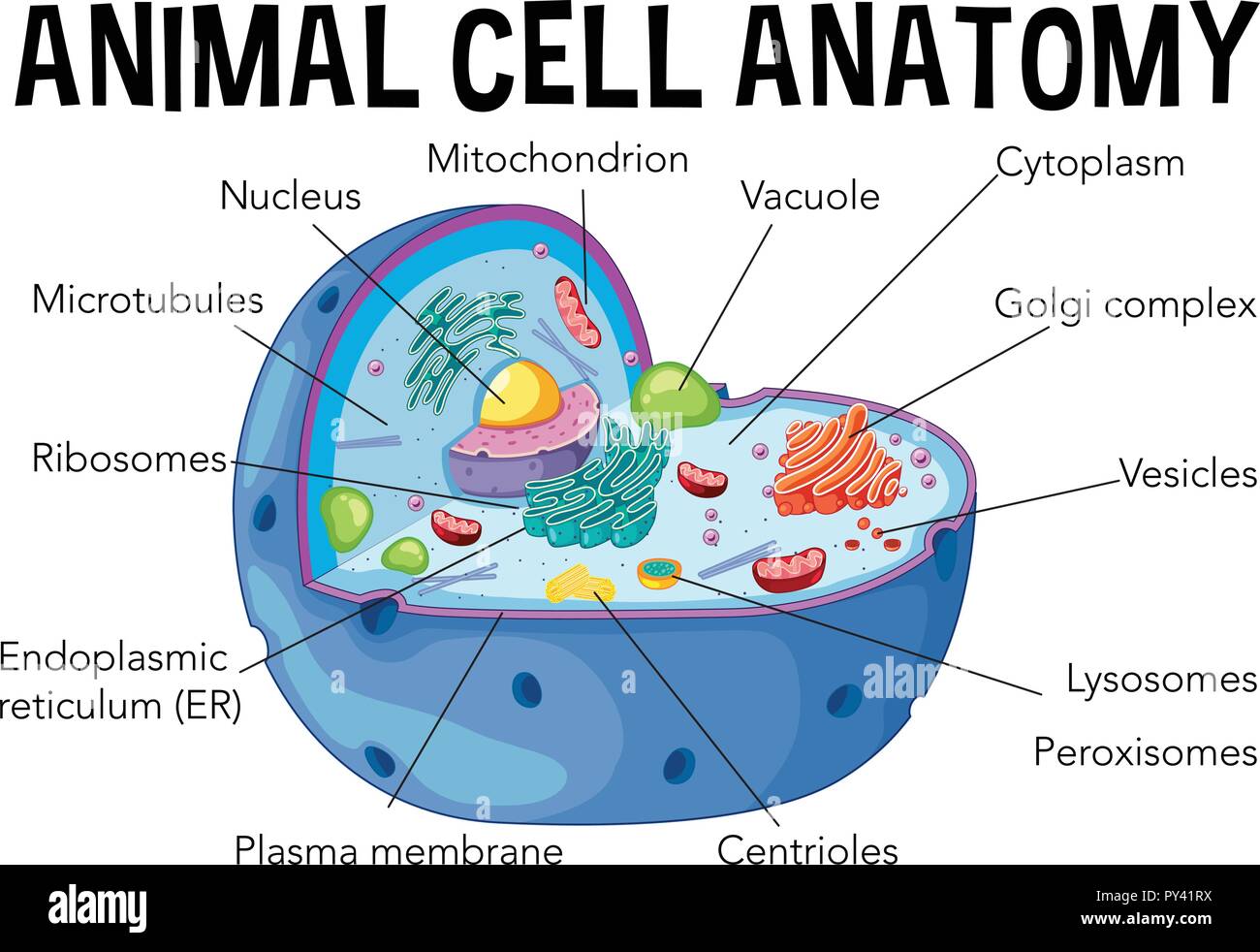
What Is An Animal Cell? Facts, Pictures & Info For Kids & Students.
Learn about the structure and function of animal cells, the basic unit of life in animals. Explore the various organelles and their roles in maintaining homeostasis.. Labeled Diagram. By Go Life Science Posted on December 20, 2022 October 17, 2023. An animal cell is a type of cell that is characteristic of animals and is present in all.

Animal Cell Diagrams Labeled Printable 101 Diagrams
Introduction. Animal cells are eukaryotic cells, mostly multicellular containing cytoplasm and membrane-bounded organelles enclosed within the plasma membrane. The animal kingdom contains the largest number of species on the entire earth. Animals are heterotrophic organisms that contain various organelles and systems to break down the food.

The animal cell diagram. Vector illustration on white Etsy in 2021
Labeled diagram of a typical animal cell Nucleus. The nucleus contains all the genetic material in a cell. This genetic information is called deoxyribonucleic acid (DNA). DNA contains all the instructions for making proteins, which control all of the body's activities. Therefore, the nucleus is like the manager's office of the cell.

Animal Cell Diagram Labeled Tim van de Vall
Animal cells are eukaryotic cells, meaning they possess a nucleus and other membrane-bound organelles. Unlike plant cells, animal cells do not have cell walls, allowing for more flexibility in shape and movement. A plasma membrane encloses the cell contents of both plant and animal cells, but it is the outer coating of an animal cell.

Animal Cell Structure, Function, Diagram, And Types.
Animal Cells Organelles and Functions. A double layer that supports and protects the cell. Allows materials in and out. The control center of the cell. Nucleus contains majority of cell's the DNA. Popularly known as the "Powerhouse". Breaks down food to produce energy in the form of ATP.

Animal Cell Diagram Image Animal Cell Parts Biology Wise Maybe you
As observed in the labeled animal cell diagram, the cell membrane forms the confining factor of the cell, that is it envelopes the cell constituents together and gives the cell its shape, form, and existence. Cell membrane is made up of lipids and proteins and forms a barrier between the extracellular liquid bathing all cells on the exterior.

Discovery and Structure of Cells Biology Visionlearning
Probably quite a lot of things! At the cellular level, though, some of the key differences include a cell nucleus and membrane-bound organelles, which you have (and the bacterium lacks). Here, we'll look in detail at the differences between prokaryotes and eukaryotes.

Animal Cell Cell diagram, Animal cell, Plant cell diagram
Almost all animals and plants are made up of cells. Animal cells have a basic structure. Below the basic structure is shown in the same animal cell, on the left viewed with the light microscope.

Plant Cells vs. Animal Cells, With Diagrams Owlcation
On the left is a circle representing an animal cell. The cell contains many cell parts with different shapes. A small bean-shaped cell part is labeled mitochondrion. A medium-sized circular cell part that has squiggly lines inside is labeled nucleus. The outermost part of the cell, which is shown as an outline of the cell, is labeled cell membrane.

South Pontotoc Biology Plant and Animal Cell Diagrams
The shape of a typical animal cell varies widely from being flat, oval to rod-shaped, while others assume shapes such as curved, spherical, concave, and rectangular. An animal cell ranges in size from 10 to 30 µm. Under the microscope, an animal cell shows many different parts called organelles, that work together to keep the cell functional.

"Labeled Animal Cell Diagram" Art Print for Sale by BundaBear Redbubble
Labeled Animal Cell Diagram. Blank Animal Cell Diagram Worksheet. The third and fourth diagrams are animal cell diagram worksheets. Quiz yourself by filling in the blanks. Unlabeled Animal Cell Diagram. Finally, an unlabeled version of the diagram is included at the bottom of the page, in color and black and white. This may be useful as a.

Labeled Animal Cell Diagram
By using, labeling, and coloring an animal cell diagram, students will explore the intricate structures within these unique units of life, improving their understanding of animal biology. We have included three variations of this worksheet, including. Animal Cell - Labeled for use as an anchor chart or note-taking worksheet.

View 20 All Parts Of An Animal Cell Labeled Eporali Wallpaper
Diagram Of Animal Cell. Animal cells are eukaryotic cells that contain a membrane-bound nucleus. They are different from plant cells in that they do contain cell walls and chloroplast. The animal cell diagram is widely asked in Class 10 and 12 examinations and is beneficial to understand the structure and functions of an animal.

Animal Cell Diagram Labeled EdrawMax Template bob娱乐网站
Animal Cell Diagram, Structure, Types, Functions. Definition of animal cell, Animal cell size and shape. Animal cell are considered to be the fundamental living species belonging to the kingdom Animalia. They are eukaryotic cells which means they possess an actual nucleus as well as organelles, which are special structures which perform various functions.

Basic Animal Cell Diagram ClipArt Best
A plant cell contains a large, singular vacuole that is used for storage and maintaining the shape of the cell. In contrast, animal cells have many, smaller vacuoles. Plant cells have a cell wall, as well as a cell membrane. In plants, the cell wall surrounds the cell membrane. This gives the plant cell its unique rectangular shape.

Animal cell hires stock photography and images Alamy
Animal Cell: Structure, Parts, Functions, Labeled Diagram. June 6, 2023 by Faith Mokobi. Edited By: Sagar Aryal. An animal cell is a eukaryotic cell that lacks a cell wall, and it is enclosed by the plasma membrane. The cell organelles are enclosed by the plasma membrane including the cell nucleus. Unlike the animal cell lacking the cell wall.